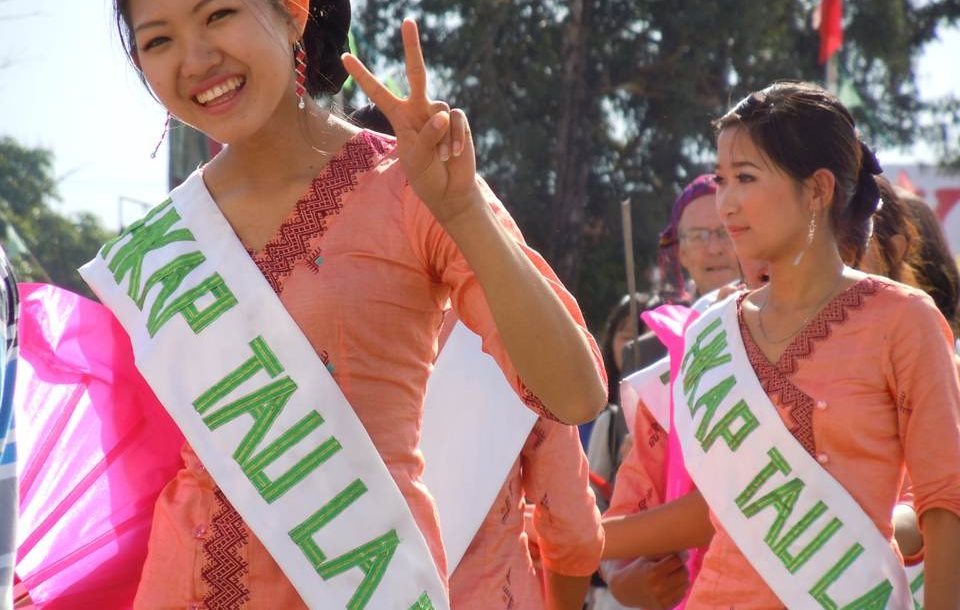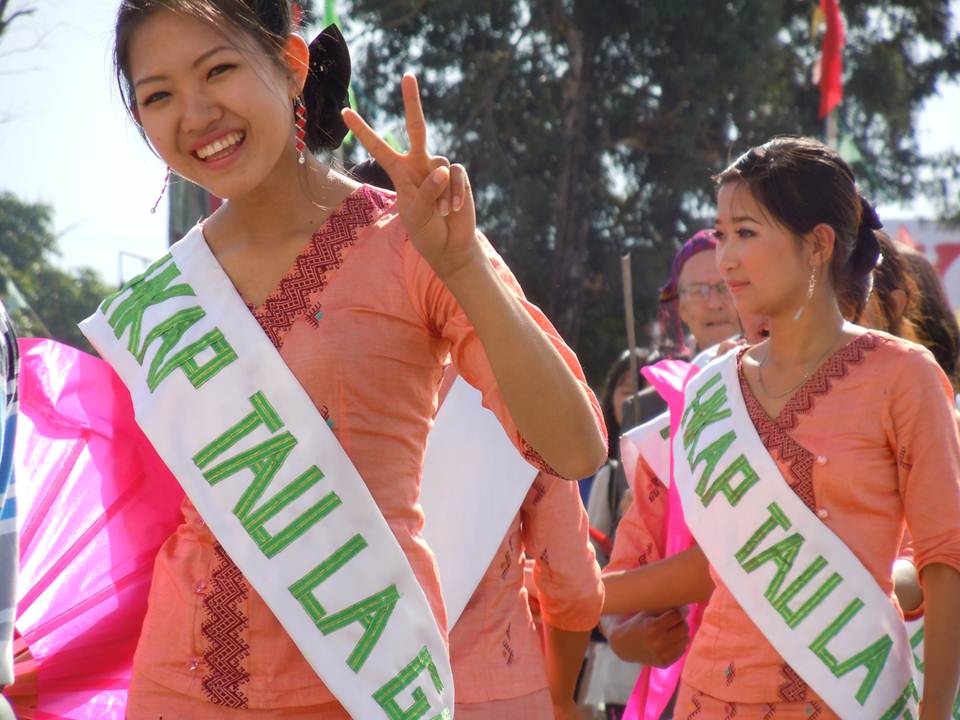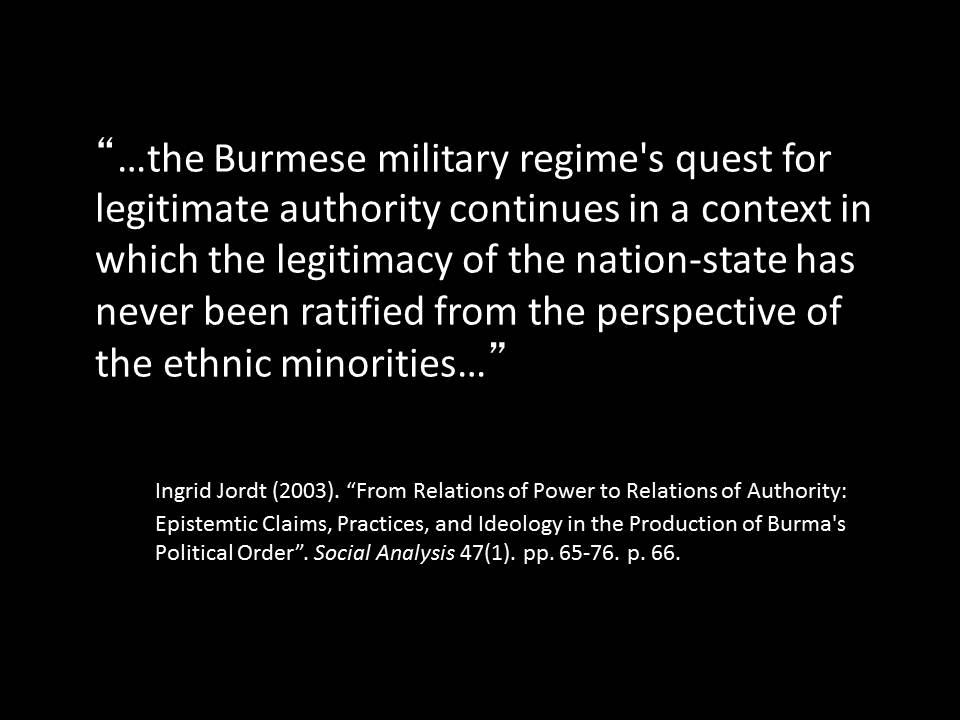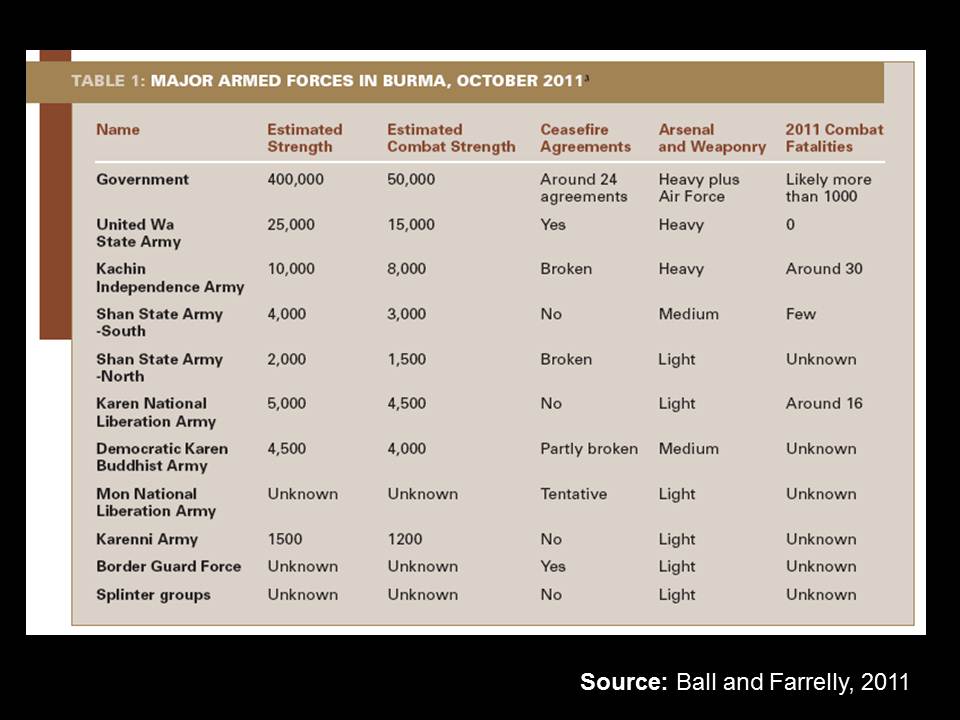This is the edited text of a speech I made at “Kachin Crisis and Reform Politics in Burma: Rhetoric and Reality”, an event held at Macquarie University, Sydney, on 12 November 2012. The other speakers were Joe Rickson, Seng Maw Lahpai and Sean Turnell.
As we all know, the new war in the Kachin and Shan State’s commenced on 9 June 2011, after a ceasefire had held for 18 years. Over those ceasefire years the Kachin Independence Army/Organisation and the Burmese Army were prepared to do business. They developed mechanisms for managing long-term grievances and the political, economic and cultural interests of the peoples of northern Burma. The fact that the ceasefire never led to a final peace agreement was a major frustration for all parties. Pragmatically, though, they considered the ceasefire better than the alternatives. Until, that is, the war re-ignited.
This new war did not spark in isolation, and my goal is to introduce four questions to help us contextualise the new Kachin conflict. We should also bear in mind that since President Thein Sein took power there have been many other parts of the country where conflict has erupted. This map illustrates the 2011 hotspots. When the year is finished the map for 2012 will look almost as stark, especially once sectarian staff in Rakhine State is included. With the transition to more participatory politics underway, Burma’s tragic history of inter-ethnic strife is clearly still not over.
For today my four questions will, I hope, set our minds to the political context of renewed fighting in Kachin areas.
The questions are:
- What is this new war?
- Why is the government fighting the Kachin?
- What would a new deal look like?
- Is democracy a precondition for peace?
It is this final question that is likely of most interest to those who worry that conflict in Kachin areas has the potential to derail wider efforts at much-needed political reform.
Surely this remains a risk, at least while, as Ingrid Jordt told us almost a decade ago, the authority of the Burmese military, and its successors, has not been legitimated from the perspective of ethnic minorities.
It is hard to conceive of any issue more important for Burma’s future peace, prosperity, democracy and happiness. It is for that reason I was particularly keen to accept the invitation to participate in today’s discussion. For me, this is the hard edge of Burma’s nascent reforms, and the issue that remains the most potent threat to a fuller and more permanent transition to inclusive and equitable government.
1. What is this new war?
Let’s not pull any punches, the new war has been intense, perhaps more intense than almost any of the fighting in the earlier Kachin war which began way back in 1961. In parts, it has been simply ferocious. Massive tatmadaw offensives have been countered by the KIA’s hit-and-run ambushes, and targeted attacks on convoy and resupply routes. The Kachin have the advantage of fighting on their home turf, among their own people, and with the apparent connivance of a Chinese government unprepared to support the obliteration of an inconvenient, but sometimes useful, border army. We should not pretend that the Kachin Independence Army and its political wing the Kachin Independence Organisation, with all their wealth, savvy and charisma, haven’t cultivated friends in strategic places.
Since June 2011 the Kachin have also maintained a strong propaganda advantage because they are prepared to report Burmese army losses and some of their own. The Burmese, on the other hand, are historically reluctant to go into any detail about their losses, and only rarely report on the extent of the conflict. This is an old habit. With this new war, the much-celebrated extra freedom recently provided to the country’s media has yet to have much effect. The army’s penchant for secrecy and paranoia are still impossible to shed.
Thus the new war has been fought and reported in such a way that judging, and comparing, the intensity of the conflict is difficult. There is no single and uncontested source of combat information, although the Kachin News Group, which publishes in Jinghpaw, Burmese and English, is probably the closest. How many combatants have been killed? Estimates range from around 500 to at least 5000. That’s a big margin of error. We have a clearer idea of the number of people who have fled the fighting: that’s around 100,000.
Surprisingly, the implications of the ferocity of the fighting are rarely remarked upon. Clearly it changes the posture and ambition of any negotiations towards a truce. Both sides have sustained heavy casualties and if even a fraction of the tatmadaw’s reputed losses have a basis in fact then it is clear that Northern Command, and some battalions in particular, have born an almighty toll. Some analysts assert that the Burmese army is immune to such losses. I doubt that.
Not only does it diminish combat capability but it surely has a huge, and untold, impact on morale, command unity and future strategic goals. We can only speculate on exactly what the resulting dynamics are but I am very confident that the Northern Command I saw in a jubilant mood at the 63rd Kachin State Day celebrations in early 2011 is not the same Northern Command that takes to the roads, trenches and waterways of northern Burma today.
2. Why is the Burmese government fighting the Kachin?
Many analysts are still baffled by the decision of the government, or some component thereof, to prosecute this war at this time. Some of the theories advanced to help understand their thinking definitely deserve thorough consideration.
There is the idea, for starters, that the war supports the interests of military commanders and others who fear missing out in a transition to more complete civilian control. I doubt they have much to fear right now but their anxiety is probably a rational response to what has been rapid and unprecedented change. If the tatmadaw wants to maintain its budgets and prestige then internal conflicts help support its claims. Inevitably, some factions in the army hierarchy wonder whether the country is currently taking the right path.
There’s also a possibility that the apparent contradiction is some form of internal hedging, all designed to sure up the support of key powerbrokers and their subordinates. It’s really anyone’s guess. But, as ever, I am inclined to endorse an interpretation that pays close attention to internal regime dynamics.
To come at this question from the opposite direction perhaps we should also ask why the government isn’t currently fighting the Wa, or the Mon, or (most of) the Shan? Perhaps the answer is partly captured by this earlier, and rough, summary of 2011 combat capabilities. A fight with the Kachin serves the purposes of the Burmese army in maintaining relevance. The KIA is not too small, nor is it too big. Once the initial phase of the war was over, and it was clear that no immediate victory or defeat was on the cards, the stalemate could serve a range of political purposes. This is murky territory and I am not one for grand conspiracies. Instead I think that happenstance and hubris, momentum and miscalculation played their natural roles.
3. What would a new deal look like?
There are people in this room with a sharper understanding of exactly what agreements are required for the two sides to cease their respective fire. The current talk is all of a Second Panglong. That’s hard to pin down so I don’t plan to rehearse the various configurations of compromise that we might see. Too much of that is, right now at least, beyond my ken.
What I can say is that rebuilding, and cultivating goodwill among a new generation on both sides of the conflict, will take perseverance. The fact is: if Burma is to live at peace with all of its peoples then there needs to be a solution in Kachin State. Part of me fears that today there is too little incentive for a final deal. The blood-letting remains contained, the international outrage is muted, the warring sides are content to keep up the attrition.
This also means a half-way house of long-term ceasefire is no longer appetising to either side. For the government in Naypyidaw, and for the Kachin high command in Laiza, there is a clear, political, pragmatic need to find a final resolution. I struggle to see how there will ever again be confidence in an arrangement that falls short of a comprehensive peace agreement. The prospect of further flare-ups remains too high.
For the Kachin this is wearying and tragic, and it will ensure that whatever benefits Burma’s current political and economic transformation brings will largely pass them by. But decision-makers on the Kachin side are, by my assessment, too ambitious to let that happen. For the government in Naypyidaw the logic of peace is even greater.
4. Is democracy a precondition for peace?
In the past both the Kachin and Burma’s military rulers have been prepared to accept non-democratic, even anti-democratic, compromises. My guess is that both sides now find that an unpalatable, perhaps even impossible, notion.
The creation of the country’s new legislative bodies, at both the national and state or regional levels, has serious implications. It changes how all sides think about politics and their future roles. Well-informed sources talk about the resolution of the Kachin conflict being delayed until at least 2015, around the time of the next General Election. Apparently the distance between the negotiating positions remains that great. Some suggest that the way the new electoral system is designed has meant that many Kachin thinkers have no faith in its results.
The fact that the Union Solidarity and Development Party retains such a stranglehold on politics is one thing; but I’m not so convinced that a deal could not just emerge unexpectedly. Indeed with the links between the Kachin and Burmese elites, and their mutual interests in economic enrichment, I wonder whether some compromise couldn’t be hammered out more quickly than the pessimists imagine. Having watched the region’s old ceasefire politics closely I understand the incredible symbiosis that can emerge when it suits.
The fact that so many Kachin now resent the Burmese for the new war is obviously the hurdle to be overcome.
Is the answer, however, in the new electoral system and the promise of democracy it may bring? In a free and fair election in Kachin State we would all expect that a political party aligned with the KIA and KIO would do well. If those in Naypyidaw who feared the Kachin State Progressive Party before the 2010 General Election can change their tune by 2015 then we could see KIO figures making their way to Naypyidaw.
*****
In an incremental, haphazard and unsatisfactory way I think this is the most realistic path to peace given the nature of the new war, the reasons why the Burmese government are fighting, and the shape of any future deal. Democratic and participatory politics could salve some of the wounds. I don’t, for a minute however, believe that there is a panacea: political or otherwise, even with Aung San Suu Kyi in charge.
For its part, the KIA shows no signs of battlefield capitulation and once the fighting has stopped it will claim a mandate for security and influence in northern Burma. It has held most of its fixed bases and continues to deny free movement and resupply to Burmese forces.
This means their resistance gives the Burmese government major headaches. Senior Burmese leaders are increasingly pressed to consider the idea of a Second Panglong. Many bristle at the very suggestion. Others know that a different form of politics, something more inclusive, is going to be needed.
For peace, the best bet is that Burma’s current moves to electoral politics succeed. These days there is plenty that is unpredictable, and can change quickly. Multi-ethnic, multi-faceted deals will be required. And with them the new legislative apparatus, to include its minority of democratic and ethnic politicians, will need to step up to take control of the situation.
 Facebook
Facebook  Twitter
Twitter  Soundcloud
Soundcloud  Youtube
Youtube  Rss
Rss 



